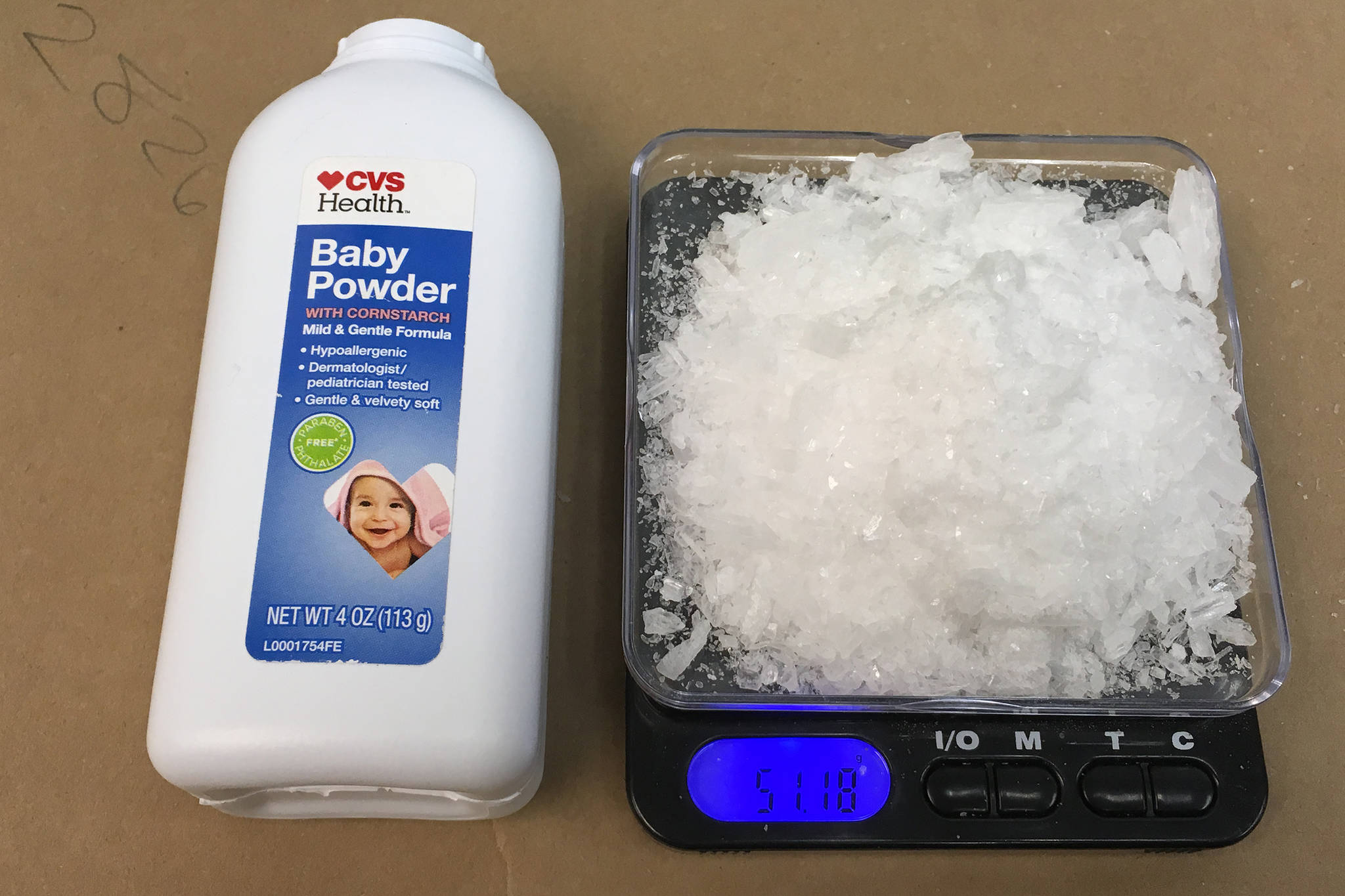As talk of the state’s opioid crisis dominated the news in recent years, the amount of methamphetamine use in Alaska has been surging, according to statewide numbers released Wednesday.
The Department of Public Safety released its annual drug report Wednesday, detailing the number of drug offenses and drugs seized during 2017. Alcohol continues to be the most abused substance in the state, the numbers show, but the amount of heroin and meth seized both rose dramatically in 2017.
The amount of meth seized statewide increased more than four-fold from 5,434 grams seized in 2016 to 24,909 seized in 2017. This increase in meth usage across the state has been happening over the past few years, as the Alaska Department of Health & Social Services released a report in November 2017 saying meth-related deaths increased by four times over recent years. From 2008-2010, there were 1.4 meth-related deaths per 100,000 people, and from 2014-2016, there were 5.8 meth-related deaths per 100,000 people, DHSS found.
The Juneau Police Department seized 3,903 grams of meth in 2017, according to the report, which is almost four times as much as any other drug. That’s also more than three times as much meth as the department seized in 2016 (1,234 grams), according to the 2016 statewide report.
The statewide report went into detail about drug trafficking patterns throughout the state, stating that Mexican Transnational Criminal Organizations (TCOs) are responsible for a large portion of the drug trade in Alaska and throughout the country. This is not expected to change anytime soon, the report states.
“The number of methamphetamine labs encountered in recent years in Alaska is statistically null,” the report states. “However, cheap methamphetamine manufactured in “super labs” in Mexico continues to be imported into the state of Alaska.”
Anchorage serves as a hub for drug traffickers, the report states, and the drugs are then distributed throughout the Interior and Southcentral regions. For Southeast, the situation is much different.
Drug trafficking in Southeast is done mostly through large commercial air carriers in the area, the mail and the Alaska Marine Highway System (AMHS), according to the report. Juneau and Ketchikan serve as the two main hubs for drugs coming into the region, according to the report.
“Gaps in travel documentation and law enforcement presence allows for relative ease of trafficking drugs from outside of Alaska into the Southeast region,” the report states. “Ocean shipping and the AMHS provides Southeast with two significant means of importing illicit drugs into the area that are not prevalent in the Southcentral and Interior regions.”
Alaska is attractive to drug-trafficking organizations for a couple main reasons, according to the report. Traffickers can get more money for drugs in Alaska due to how remote and difficult-to-access many locations are, the report finds.
Secondly, many law enforcement agencies are short-staffed and responsible for policing huge areas. As of Aug. 3, there were 50 vacancies among the Alaska State Troopers. JPD has also dealt with a shortage of officers in recent years, and as of earlier this summer was still eight officers short of having a full staff.
• Contact reporter Alex McCarthy at 523-2271 or amccarthy@juneauempire.com. Follow him on Twitter at @akmccarthy.

